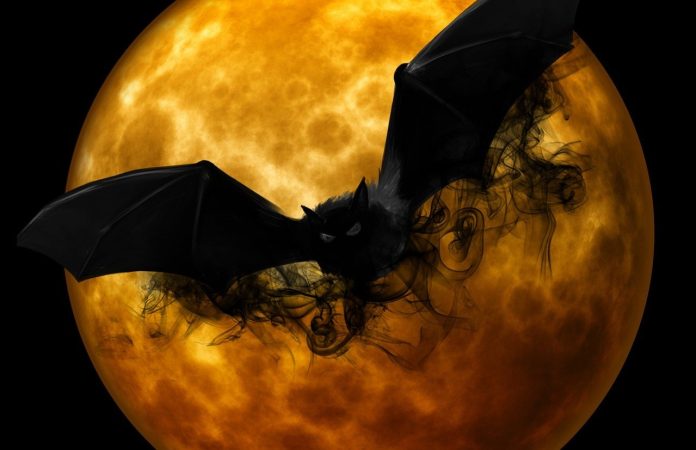A Classic American Mystery with Gothic Flair
Introduction
“The Bat” by Mary Roberts Rinehart, first published in 1920, stands as a hallmark in the mystery genre. Rinehart, often dubbed the “American Agatha Christie,” crafted a narrative that deftly blends suspense, Gothic elements, and classic detective tropes. The novel not only captivated readers of its time but continues to intrigue modern audiences with its timeless appeal. Its clever plot twists, atmospheric tension, and memorable characters have cemented its status as a cornerstone of early 20th-century American literature. Both Rinehart’s ability to weave complex narratives and her innovative approach to the mystery genre have left an indelible mark on the literary world, influencing countless writers who followed in her footsteps.
Plot Overview of “The Bat” by Mary Roberts Rinehart
The story centres around Cornelia Van Gorder, a retired, affluent woman who rents a secluded and ancient mansion in Long Island known as the Oaks for the summer. Unbeknownst to her, the mansion harbours dark secrets and becomes the target of a notorious criminal dubbed “The Bat.” The plot thickens as a storm traps Cornelia and her guests inside the mansion, heightening the suspense and sense of isolation. Rinehart masterfully builds tension through a series of mysterious occurrences, including strange noises, disappearing objects, and shadowy figures. The search for a hidden fortune intertwines with the quest to unmask “The Bat,” creating a labyrinthine plot that keeps readers guessing until the very end. The novel’s climax, filled with unexpected twists and revelations, showcases Rinehart’s skill in crafting a compelling and intricate mystery.
Gothic Elements
Though “The Bat” is fundamentally a mystery novel with comedic elements, its Gothic elements are undeniable. The setting of the old, imposing mansion filled with hidden passages and chambers and eerie noises is quintessentially Gothic. The atmosphere is charged with a sense of impending doom, further accentuated by the stormy weather that isolates the characters. These elements create a haunting backdrop that enhances the tension and drama of the unfolding mystery. The mansion itself becomes a character, its dark corners and secret rooms adding to the sense of claustrophobia and fear. Rinehart’s use of Gothic tropes such as the damsel in distress, the enigmatic villain, and the theme of entrapment enrich the narrative, giving it a depth and complexity that elevate it above a typical whodunit.
American Roots of “The Bat” by Mary Roberts Rinehart
Despite its Gothic overtones, “The Bat” is distinctly American. The characters, setting, and societal norms reflect early 20th-century American culture. Cornelia Van Gorder, the protagonist, embodies the independent spirit of American women of the era, challenging traditional gender roles with her bravery and resourcefulness. The novel also subtly critiques social issues such as the class divide and the pursuit of wealth, grounding its suspenseful narrative in real-world concerns. The interactions between characters from different social backgrounds highlight the tensions and dynamics of the time, adding a layer of social commentary to the thrilling plot. Rinehart’s portrayal of American society, with its unique blend of optimism and underlying anxiety, provides a rich context that makes the story more relatable and compelling for readers.
Rinehart’s Contribution to the Genre
Mary Roberts Rinehart’s contribution to the mystery genre is significant. She is credited with pioneering the “Had-I-But-Known” school of mystery writing, where the narrator hints at potential danger that could have been avoided with foreknowledge. This technique is evident in “The Bat,” adding a layer of dramatic irony that intensifies the reader’s engagement. Rinehart’s innovative narrative style, characterised by its psychological depth and emphasis on suspense, set a new standard for mystery novels. Her ability to create multifaceted characters and intricate plots influenced not only her contemporaries but also future generations of mystery writers. Rinehart’s work, including “The Bat,” helped shape the conventions of the genre, introducing elements that have become staples in mystery storytelling.
Reception and Influence of “The Bat” by Mary Roberts Rinehart
Upon its release, “The Bat” received widespread acclaim for its thrilling plot and innovative storytelling. It became a bestseller, solidifying Rinehart’s reputation as a master of suspense. The novel’s success led to numerous stage adaptations, including a famous Broadway play in three acts co-written by Rinehart and Avery Hopwood. The play’s success further expanded the story’s reach, bringing it to a broader audience and cementing its place in popular culture. “The Bat” also inspired several film adaptations, contributing to the story’s enduring popularity and influence on the mystery genre. These adaptations, each bringing their interpretation of Rinehart’s work, have introduced new audiences to the classic tale. The novel’s impact on literature and entertainment underscores its lasting appeal and the enduring fascination with its complex, suspenseful narrative.
Conclusion
“The Bat” by Mary Roberts Rinehart is a quintessential read for fans of mystery and Gothic fiction. Its compelling plot, atmospheric setting, and richly drawn characters make it a standout work in Rinehart’s oeuvre and the mystery genre at large. The novel’s blend of suspense and Gothic elements continues to captivate readers, ensuring its place as a timeless classic. Rinehart’s skilful storytelling and innovative approach to the mystery genre have left an enduring legacy, making “The Bat” not just a product of its time but a perennial favourite that continues to inspire and entertain. Whether approached as a thrilling whodunit or a rich Gothic narrative, “The Bat” offers a reading experience that is both exhilarating and profoundly satisfying.





